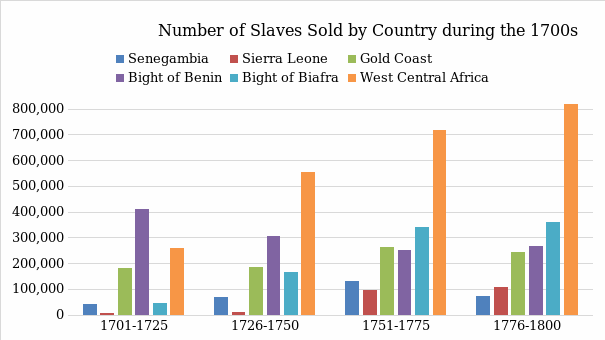The horrific act of enslaving African people and forcefully transporting them to the Americas is known as the transatlantic slave trade. For centuries, African people were enslaved and shipped in cramped and poorly ventilated ships to the Americas to work on plantations and in households. The slave trade had a long-term and devastating impact on African societies. It caused physical, psychological, and economic devastation and uprooted millions of people from their homelands. Additionally, the slave trade disrupted the cultural and social networks of African communities and impacted the growth of African economies (Gates, 2021). The slave trade also created a power imbalance between Europe and Africa, which had far-reaching consequences. To this day, the legacy of the slave trade continues to be felt in African societies. This essay analyses slavery across some African countries, focusing mainly on Congo, how it was affected and how education and cultural knowledge can resolve those issues.

From the above table, one trend noted is that the slave trade was highest in west central Africa, especially from 1726 to the 1800s. West Central Africa was a major hub for the Atlantic Slave Trade during this period due to its location and access to the Atlantic Ocean. The region also contained ports from which slave ships could dock and transport enslaved people. Additionally, the area had several key commodities merchants sought, such as gold and ivory, which could then be exchanged for enslaved Africans (Gates, 2021). The second trend is that the overall population subjected to the slave trade kept increasing from 1700 to 1800. The overall population subjected to the slave trade kept increasing from 1700 to 1800 in Africa due to various factors. The demand for enslaved people in the Americas grew significantly during this period, and as a result, African rulers and traders increased their efforts to capture more people and send them to the New World (Gates, 2021). Slave trade was often used to solve disputes between rival African states, leading to more people being captured and sold.
The Congo was a major source of enslaved people in West Central Africa, with the slave trade operating in the region since the 16th century. The Kingdom of Belgium ruled it as a colony from 1908 until its independence in 1960 (Baraza, 2020). During the colonial period, Belgian authorities continued to support the slave trade and allow the movement of slaves across the colony (Baraza, 2020). Slavery in the Congo was formally abolished in 1947, but it flourished until the country achieved independence in 1960. The Belgian government also took great efforts to suppress anti-slavery movements and supported the slave trade until it was finally abolished in 1964 (Baraza, 2020). Although the slave trade was officially abolished in the Congo, the legacy of this dark period still exists today, with many of the descendants of enslaved people still facing social and economic discrimination.
The slave trade had a devastating effect on the organizational structure of African culture in the Congo. Through the enslavement of millions of people, the slave trade disrupted the traditional family units and communities established in the region. The slave trade permanently fractured the traditional African family structure, as parents, children, and siblings were often separated and sold off as slaves (Baraza, 2020). Many enslaved people were taken from their homes and communities, depriving the region of valuable labour force members. This caused economic hardship in many communities, leading to poverty and increased regional inequality (Baraza, 2020). The legacy of the slave trade in the Congo still has a profound effect on the region today. There is also an increased prevalence of poverty and inequality that can be attributed to the legacy of the slave trade.
To improve the conditions in the Congo, it is important to address the legacy of the slave trade. One recommendation is to increase access to education and healthcare in the region and to ensure that all citizens have access to these resources, regardless of their socioeconomic status (Central Africa, 1800–1900 A.D.). This could be achieved through increased government investment in education and healthcare, as well as increased access to financial aid and scholarships for those from families affected by the slave trade. Moreover, it is important to address the economic inequality that exists in the region. This can be done through increased job training and employment opportunities for those from families affected by slavery (Central Africa, 1800–1900 A.D.). This could include creating programs that provide job training and job placement services and incentives for businesses to hire those from disadvantaged backgrounds.
In conclusion, the slave trade devastated the organization of African culture in the Congo. The traditional family and community structures have been permanently disrupted, and the economic inequality caused by the slave trade is still evident today. To improve the conditions in the Congo, it is important to address the legacy of the slave trade by increasing access to education and healthcare and providing job training and employment opportunities for those from disadvantaged backgrounds. By taking these steps, the Congo can begin to heal from the legacy of the slave trade and create a better future for all its citizens.
References
Baraza, S. (2020). DRC: A history of pillage, destination unknown. The Africa Report.com. Web.
Central Africa, 1800–1900 A.D. (2004). In Heilbrunn Timeline of Art History. New York: The Metropolitan Museum of Art, Web.
Gates, H. L. (2021). Explore the origins and forced relocations of enslaved Africans across the Atlantic World. Slave Voyages. Web.